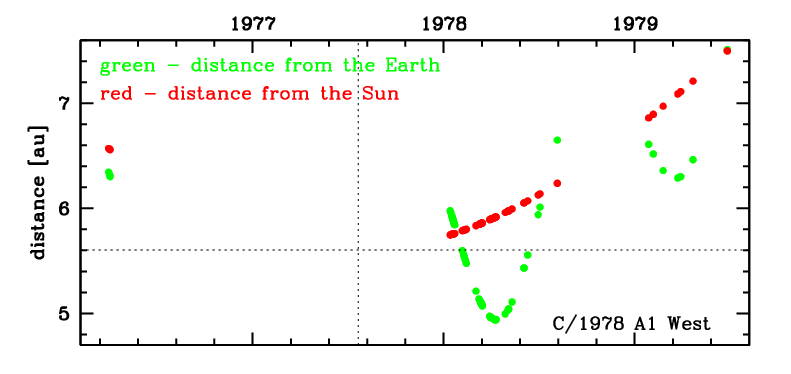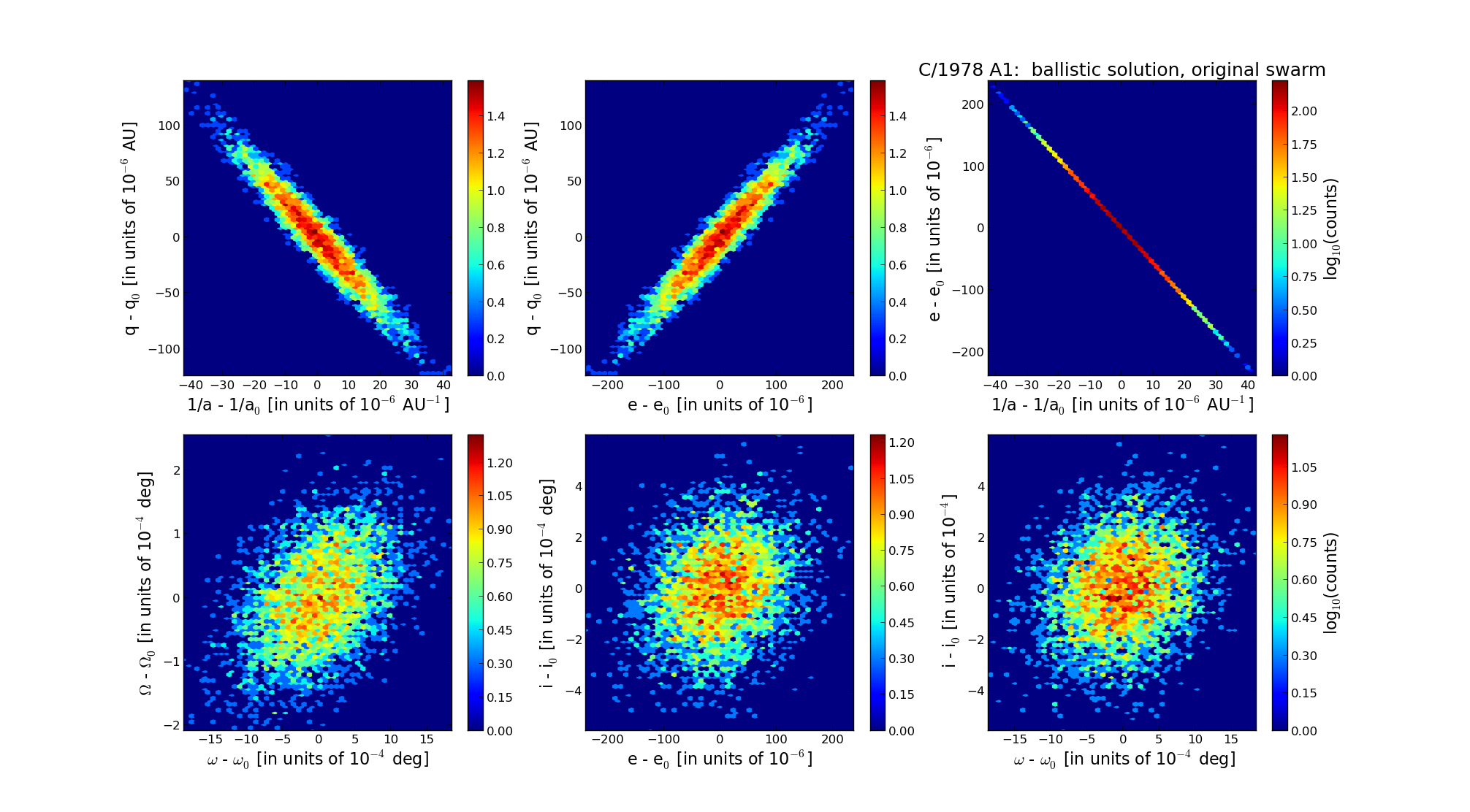C/1978 A1 West
more info
Comet C/1978 A1 was discovered on 12 January 1978, almost six months after its perihelion passage, and was last seen on 7 April 1978 [Kronk and Meyer, Cometography: Volume 5]; later few prediscovery measurements going back up to 30 March 1976 were found, that is 15.5 months before its perihelion passage (see figure).
The comet made its closest approach to the Earth on 8 May 1977 (4.71 au), that was seven months before its discovery; however, in its next opposition – three months after discovery – the comet approached minimal distance of 4.94 au from the Earth (on 10 April 1978).
Solution given here is based on data spanning over 3.24 yr in a range of heliocentric distances: 6.57 au – 5.61 au (perihelion) – 7.50 au.
This Oort spike comet suffers small planetary perturbations during its passage through the planetary system that lead to escape the comet from the planetary zone on a hyperbolic orbit (see future barycentric orbit).
See also Królikowska 2014 and Królikowska and Dybczyński 2017.
The comet made its closest approach to the Earth on 8 May 1977 (4.71 au), that was seven months before its discovery; however, in its next opposition – three months after discovery – the comet approached minimal distance of 4.94 au from the Earth (on 10 April 1978).
Solution given here is based on data spanning over 3.24 yr in a range of heliocentric distances: 6.57 au – 5.61 au (perihelion) – 7.50 au.
This Oort spike comet suffers small planetary perturbations during its passage through the planetary system that lead to escape the comet from the planetary zone on a hyperbolic orbit (see future barycentric orbit).
See also Królikowska 2014 and Królikowska and Dybczyński 2017.
| solution description | ||
|---|---|---|
| number of observations | 62 | |
| data interval | 1976 03 30 – 1979 06 26 | |
| data type | perihelion within the observation arc (FULL) | |
| data arc selection | entire data set (STD) | |
| range of heliocentric distances | 6.57 au – 5.61 au (perihelion) – 7.5 au | |
| detectability of NG effects in the comet's motion | NG effects not determinable | |
| type of model of motion | GR - gravitational orbit | |
| data weighting | YES | |
| number of residuals | 120 | |
| RMS [arcseconds] | 1.30 | |
| orbit quality class | 1a | |
| orbital elements (barycentric ecliptic J2000) | ||
|---|---|---|
| Epoch | 1670 12 12 | |
| perihelion date | 1977 07 22.68625000 | ± 0.00647600 |
| perihelion distance [au] | 5.60844086 | ± 0.00003815 |
| eccentricity | 0.99978957 | ± 0.00006666 |
| argument of perihelion [°] | 343.384843 | ± 0.000535 |
| ascending node [°] | 211.662760 | ± 0.000069 |
| inclination [°] | 116.926807 | ± 0.00016 |
| reciprocal semi-major axis [10-6 au-1] | 37.52 | ± 11.89 |
| file containing 5001 VCs swarm |
|---|
| 1978a1a1.bmi |

